
All categories
Featured selections
Trade Assurance
Buyer Central
Help Center
Get the app
Become a supplier

(1075 products available)







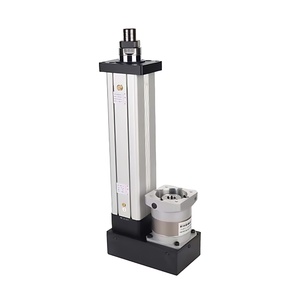







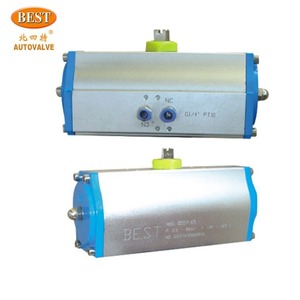





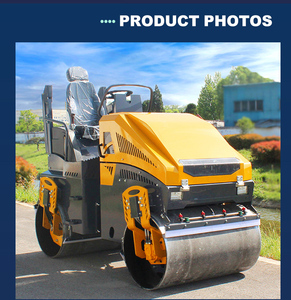







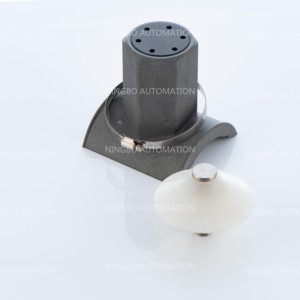

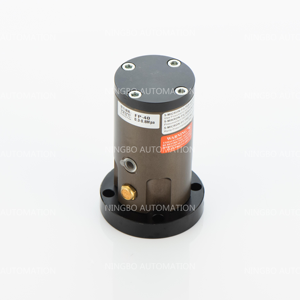










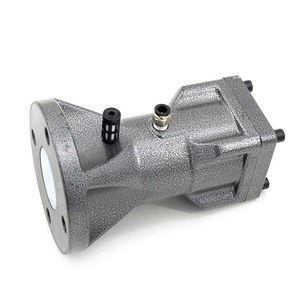

Market Overview: The global market for pneumatic linear vibrators is part of the broader pneumatic actuators market, which was valued at approximately USD 5.23 billion in 2023 and is expected to grow at a CAGR of 6.58%, reaching USD 8.18 billion by 2030, according to Research and Markets. This growth is driven by the increasing automation in various industries, such as automotive and food processing, where pneumatic systems are crucial for efficient operation. Additionally, the rising demand for reliable motion control solutions has led to the integration of advanced technologies in pneumatic linear vibrators, enhancing their performance and reliability. As industries pursue smart manufacturing initiatives, pneumatic linear vibrators equipped with sensors and connectivity features are becoming more prevalent, contributing to market expansion.
Regional Insights: The Asia-Pacific region is emerging as a significant market for pneumatic linear vibrators, primarily due to the rapid industrialization and the adoption of automation technologies. Countries like China and India are witnessing substantial investments in manufacturing, which is expected to drive demand for pneumatic solutions. The U.S. market, valued at USD 4.2 billion in 2023, is also experiencing growth, particularly in sectors such as aerospace and defense, which require high-performance pneumatic systems. Furthermore, the increasing focus on energy efficiency and sustainability in manufacturing processes is pushing industries to adopt eco-friendly pneumatic solutions. With major players like Festo SE & Co. KG and Parker-Hannifin Corporation leading the market, the competition is intensifying, prompting continuous innovation and product development in pneumatic linear vibrators.
Bowl feeders:
A pneumatic bowl vibrator sorts components into the proper order and can uniformly distribute them. Compared to other types of feeders, they can handle several item types. The primary sorting mechanism is a circular bowl on a vibrating base. The vibration moves objects toward the top of the bowl, where they can be taken away.
Paddle feeders:
The vibration of the paddles is the main distinguishing feature of pneumatic paddle feeders. These devices evenly distribute bulk materials, like powders or granules, from a hopper or bin to a conveyor belt or processing equipment. The pnv feeders create horizontal or radial motion through a pneumatic drive. This motion causes the paddles to move and the materials to be transferred.
Bin or hopper vibrators:
Bin or hopper vibrators are used to maintain the flow of materials stored in bins or hoppers. They are typically installed at the outlet of the bin or hopper and vibrate the walls, which helps to separate the friction between the bulk material and the container, thus facilitating the flow.
Dewatering screens:
Dewatering screens that use pneumatic vibrators are used for drying and separating solid-liquid mixtures. These screens employ vibration to facilitate the drainage of water from the screened material, thereby enabling its quick drying.
Fluidized beds:
Pneumatic linear vibrators find application in fluidized bed systems. Such systems are used in the fields of chemical engineering, pharmacy, and foodstuff processing, among others, for tasks like drying, granulation, and sorting.
Screening apparatus:
The screening devices function by means of vibration, which is produced by the pneumatic linear vibrators. Such devices are employed for the separation of the bulk materials, their classification, as well as the elimination of foreign particles.
Garden tillers and compactors:
Pneumatic compactors are used to densify materials by means of horizontal or circular vibrations. They are suitable for a variety of soil and material processing applications. Garden tillers, on the other hand, are used for farming and landscaping, as well as loosening and mixing soil by means of vibrations and tilting blades.
It is essential to know that the specifications for different types of vibrators may vary in size, power, capacity, sound level, and frequency. For instance, the frequency and sound level are two important specifications customers should know. They often vary depending on the design and model from factory to factory. The common frequencies for many vibrators are approximately between 12,000 to 25,000 Hz, equivalent to 12 to 25 kHz. The corresponding power level can range from 95 to 120 decibels. But the more recent models have a way of reducing the sound level to about 75 to 85 decibels.
Also, the capacity specification shows the weight or volume of materials the vibrators can handle. For example, the capacity of the vibrator may be around 30 to 100 tons/hour for food-processing companies to handle such large volumes of grains. Power-wise, the specifications may range from 0.5 to 5 Pneumatic linear vibratorpower kw, depending on the machine's driving force. Many manufacturers design them for energy efficiency so that they can use less power. Finally, customers will find that some vibrators are moisture-proof or water-resistant, while others are not. Only the IP65, IP66, or IP67 models won’t let dust in or stop water from working inside the machine.
Pneumatic vibrators are quite easy to maintain. Still, they need just a few preventive maintenance practices to run well and last longer. First, operators should make it a habit to regularly check the air supply pressure and flow. This is to ensure they fall within the recommended levels for optimum performance. When performing routine checks, they should also inspect the hoses and filters to ensure there are no blockages or leaks from cracks and might affect the vibrators' efficiency.
Second, operators should lubricate the moving parts of the vibrator with the right kind of oil to reduce friction and prevent premature wear. Third, the maintenance manual provides notes on specific instructions and important precautions on the vibrators' maintenance. Operators should follow these guidelines carefully to avoid damaging the unit or voiding the manufacturer’s warranty.
Finally, when transporting or storing the vibrator, it should be kept at a temperature between -40ºC and +70ºC, so neither extreme affects performance when finally used. Also, customers need to be mindful of the cleaning process for any lubricant residue on the product. The cleaning process should be done only with soft cloths or brushes and non-corrosive cleaning solutions.
Food and pharmaceutical industries
Food and pharmaceutical industries require equipment that meets strict hygiene standards. Pneumatic vibrators help achieve this by breaking the material into smaller pieces. This improves the quality of final products.
Material handling and bulk packaging
Pneumatic vibrators are widely used in the bulk handling and packaging sectors. They play a key role in improving flow, reducing congestion, and streamlining processes. For example, they assist in the emptying of hoppers, chutes, and feeders by preventing clumping of materials. In addition, they help to quickly, smoothly and efficiently fill containers.
Green industry
Pneumatic vibrators assist in the processing and transfer of various solid materials. For example, they can be used to improve the flow of powders, pellets, and grains in silos, chutes, and conveyors. In addition, they can help unblock feeders and grills. This will increase the productivity and efficiency of solid material handling equipment in the agricultural industry.
Foundries and construction industries
Pneumatic vibrators have a variety of applications in the construction and foundry industries. They help to evenly distribute and compact materials such as moulding sand, gravel, cement, and aggregates. Pneumatic vibrators also assist in unblocking chutes and hoppers, thereby facilitating the flow of materials and improving productivity.
Mining and metallurgy industries
Pneumatic vibrators have a wide range of applications in the mining and metallurgical industries. For example, they are used to improve the flow of ores, slag, carbon, and other materials in silos, chutes and screens. They also help to prevent clogging of feeders and grilles, thus facilitating material sorting and transfer.
When choosing a pneumatic linear vibrator, a few factors need to be considered to ensure the right model is selected for the application.
Payload and pressure:
When selecting the right pneumatic linear motor, it is important to consider the weight of the payload. Additionally, the required operating pressure for the task must be taken into account. To ensure optimal performance and safety, a balance between payload and operating pressure should be maintained.
Mounting options:
The choice of mounting option for a device is crucial, as it determines how the equipment will be installed and positioned. To ensure that the intended function is achieved, it is important to assess the suitability of each mounting option in relation to the application's requirements.
Frequency:
In determining the vibration output of an application, the operating frequency is significant. This parameter is essential in establishing the functioning of the device in the intended use. According to studies, some models of vibrating devices have a maximum operating frequency of up to 20,000 Hz.
Motor sizes:
The overall dimensions, or size, of a motor play an important role in achieving a proper fit within a specific application. To ensure that the motor will function effectively in the intended use, it is important to consider its sizes in relation to the available space and other equipment.
Ingress protection:
The term "ingress protection" refers to the level of protection provided to an electrical device against the invasion of solid objects and liquids. This protection is typically indicated by a two-digit code. To safeguard the equipment from potential damage caused by dust and water, it is important to choose a device with an appropriate ingress protection rating.
Q1: How does a pneumatic linear vibrator work?
A1: Pneumatic linear vibrators function by directly coupling the motive force to the material that is to be moved or separated. The motive power is usually an air compressor that feeds air into the vibrator through a small-length hose.
Q2: What are the benefits of using a pneumatic linear vibrator?
A2: The benefit of using a pneumatic linear vibrator includes the cost-effectiveness, material quality, power source, maintenance, noise, and temperature tolerance.
Q3: Are there any downsides to pneumatic vibrators?
A3: Downsides of pneumatic linear vibrators include high noise levels and air consumption.
Q4: What materials can be handled with pneumaticLinear vibrators?
A4: Nearly all solid materials can be handled by a pneumatic vibrator, including aggregates, sand, cement, coal, rubber, plastics, flour, chemical powder, bulk solid, etc. However, the material's particle size must not exceed the maximum allowable dimension specified for the particular vibrator model.